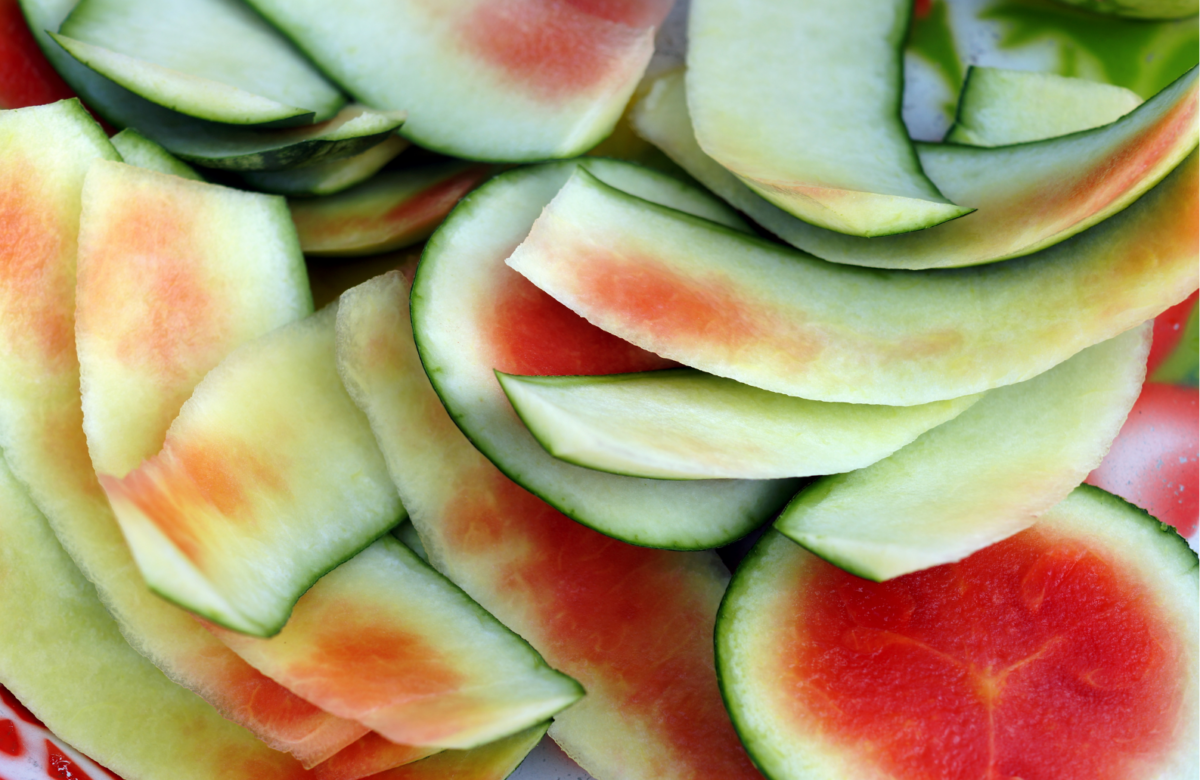When we enjoy a refreshing slice of watermelon, we often focus on the sweet, juicy flesh.
However, the watermelon rind, which is the green outer layer, is frequently discarded despite being highly nutritious and beneficial.
In this article, we will delve deeper into the six key benefits of watermelon rinds, exploring their nutritional value and how they can enhance your health and culinary experiences.
Nutritional Value of Watermelon Rinds
Watermelon rinds are surprisingly rich in nutrients.
They contain essential vitamins and minerals that can contribute positively to your overall health.
Here’s a closer look at their nutritional profile:
- Low in Calories: Watermelon rinds are very low in calories, making them an excellent choice for those looking to maintain or lose weight.
- Rich in Vitamins: They contain vitamins A and C, which are essential for maintaining healthy skin and boosting the immune system.
- Mineral Content: Watermelon rinds also provide important minerals such as magnesium and potassium, which are vital for muscle function and heart health.
- High Water Content: With a high water percentage, watermelon rinds help keep you hydrated, especially during hot summer months.

Benefits of watermelon rinds
1. Digestive Health
Watermelon rinds are an excellent source of dietary fiber.
Fiber is crucial for maintaining a healthy digestive system.
It helps regulate bowel movements and can prevent constipation by adding bulk to your stool.
A diet high in fiber can also reduce the risk of developing digestive disorders such as diverticulitis and hemorrhoids.
Moreover, fiber promotes the growth of beneficial gut bacteria, which play a significant role in digestion and overall health.
Including fiber-rich foods like watermelon rinds in your diet can lead to improved gut health and regularity.
2. Weight Loss
Due to their low-calorie content and high fiber levels, watermelon rinds can be a helpful addition to weight management plans.
The fiber found in watermelon rinds helps you feel full longer, reducing the likelihood of overeating.
When you consume foods high in fiber, they expand in your stomach, creating a sense of fullness that can prevent snacking between meals.
Additionally, incorporating watermelon rinds into your meals adds volume without significantly increasing caloric intake.
This makes it easier to enjoy satisfying portions while still adhering to a calorie-conscious diet.
Thus, adding watermelon rinds can support your weight management goals effectively.
3. Heart Health
The potassium found in watermelon rinds plays a crucial role in heart health.
Potassium helps regulate blood pressure by balancing out the negative effects of sodium in the body.
A diet rich in potassium can lower blood pressure levels, reducing the risk of heart disease and stroke.
Moreover, the antioxidants present in watermelon rinds can help reduce inflammation and lower cholesterol levels.
Chronic inflammation is a significant risk factor for cardiovascular diseases; therefore, consuming foods rich in antioxidants is essential for heart health.
Incorporating watermelon rinds into your diet can contribute positively to maintaining a healthy heart.
4. Hydration
Staying hydrated is vital for overall health and well-being.
Watermelon rinds contain about 90% water, making them an excellent hydrating snack during hot weather or after exercise.
Proper hydration supports various bodily functions, including temperature regulation, joint lubrication, and nutrient transport.
Dehydration can lead to fatigue, dizziness, and reduced physical performance; thus, consuming hydrating foods like watermelon rinds is beneficial.
Incorporating these rinds into smoothies or salads can enhance hydration while providing essential nutrients at the same time.
5. Skin Health
Vitamins A and C found in watermelon rinds contribute significantly to skin health.
Vitamin A helps maintain skin integrity by promoting cell turnover and preventing dryness.
It is also crucial for maintaining healthy vision and immune function.
On the other hand, Vitamin C plays a vital role in collagen production, which is essential for skin elasticity and firmness.
Collagen helps reduce wrinkles and fine lines while promoting a youthful appearance.
6. Muscle Recovery
Watermelon rind contains an amino acid called citrulline that may aid muscle recovery after exercise.
Citrulline helps improve blood flow by promoting the dilation of blood vessels, which enhances oxygen delivery to muscles during workouts.
This increased blood flow can lead to improved exercise performance as well as reduced muscle soreness post-exercise.
Some studies suggest that consuming citrulline-rich foods like watermelon rind may help athletes recover faster from intense workouts by reducing muscle damage and improving recovery times.
Incorporating watermelon rind into smoothies or post-workout snacks can be an effective way to support muscle recovery naturally.
Ways to Use Watermelon Rinds
Now that we understand the nutritional value and health benefits of watermelon rinds, let’s explore some creative ways to incorporate them into our daily lives:
1. Pickled Watermelon Rind
One popular way to enjoy watermelon rind is by pickling it.
Pickled watermelon rind makes for a tangy condiment that pairs well with sandwiches or can be enjoyed as a snack.
2. Smoothies
You can add watermelon rind to smoothies for an extra nutrient boost without altering the flavor significantly.
Simply blend it with other fruits like bananas or berries for a refreshing drink.
3. Stir-fries
Chop up watermelon rind into small pieces and add it to stir-fries for added crunch and nutrition.
It pairs well with vegetables like bell peppers and carrots.
4. Soups
Watermelon rind can be used in soups as a thickening agent or simply as an additional ingredient.It adds texture while keeping the soup light and refreshing.
5. Juicing
Juicing is another excellent way to incorporate watermelon rind into your diet.Combine it with other fruits or vegetables for a hydrating drink that’s rich in vitamins and minerals.



